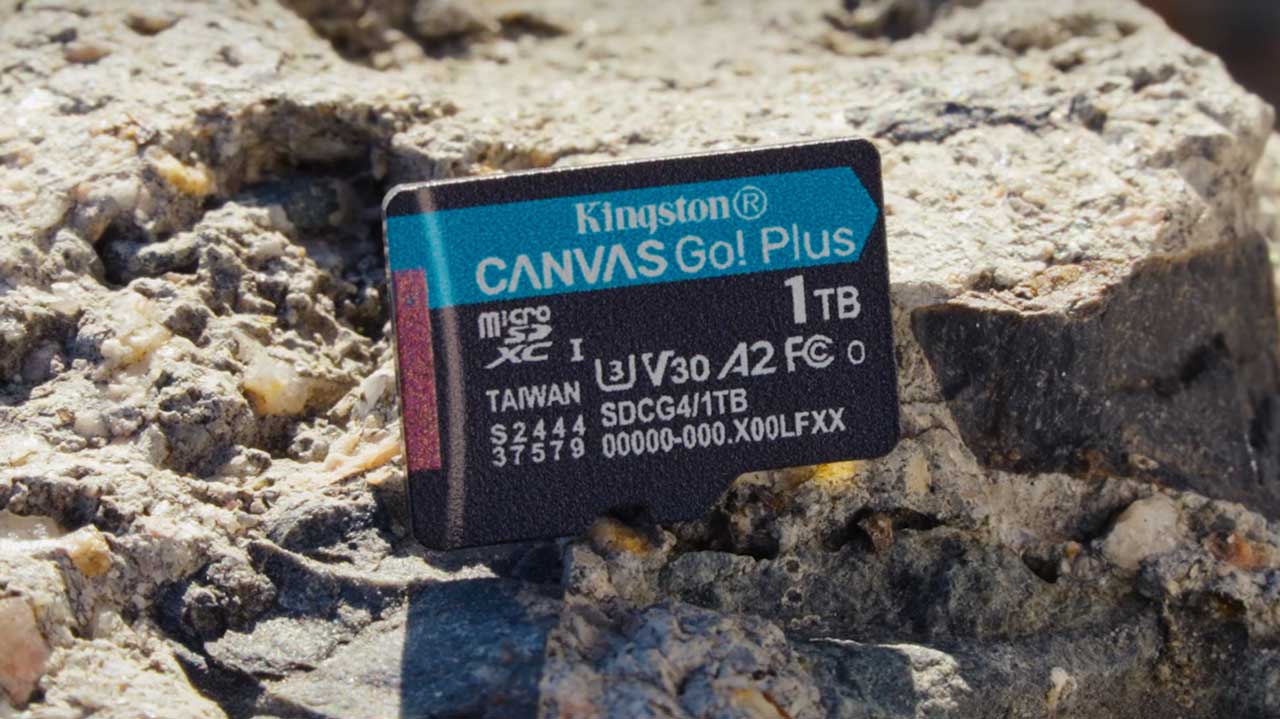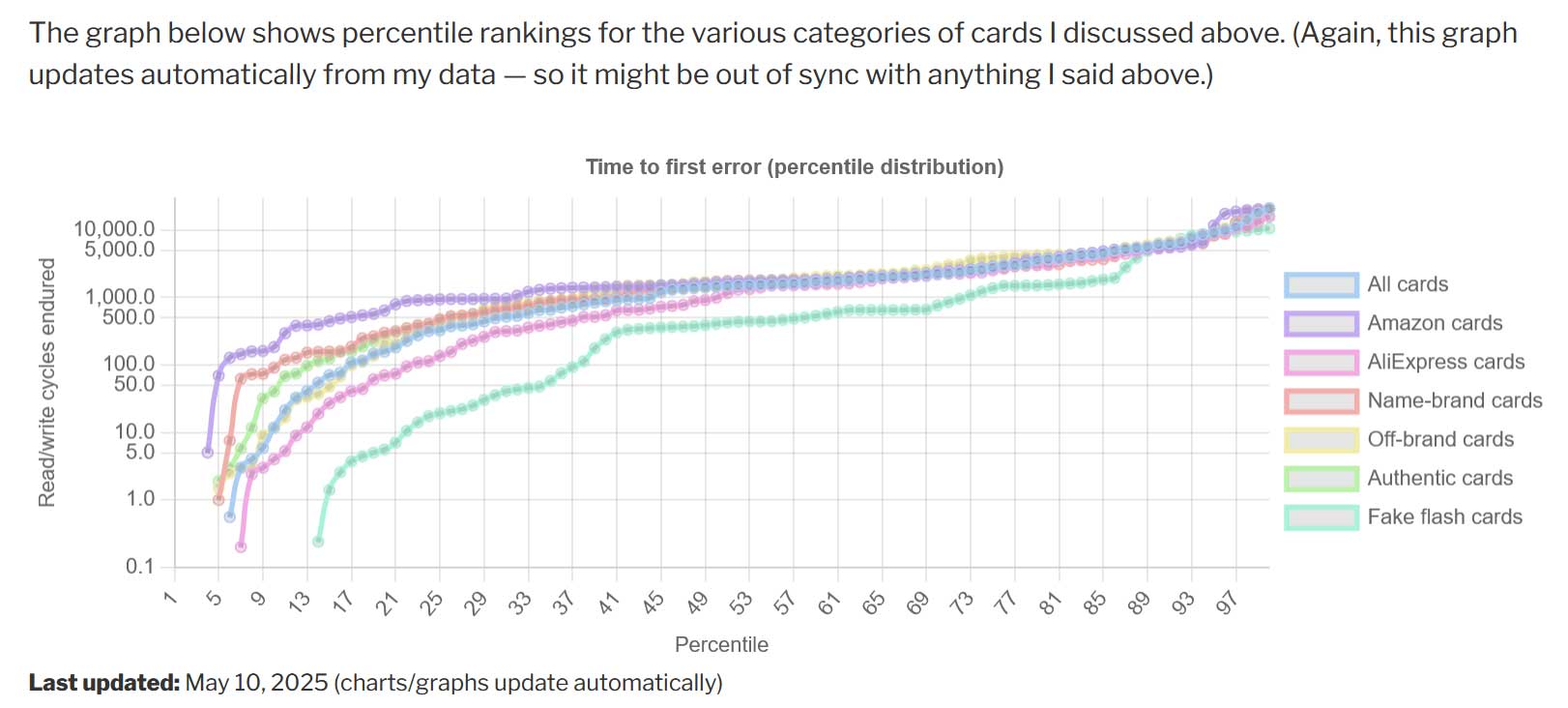Massive MicroSD card testing database exposes fakes, charts performance and endurance — 200 cards tested, 51 to destruction; 8 machines running 70 card readers wrote 18 petabytes for testing
Enthusiast set up '70 card readers running around the clock… writing 101 terabytes of data per day.'

Tech enthusiast Matt Cole is the determined creator and maintainer of The Great MicroSD Card Survey, a significant investigative testing and benchmarking treasure trove that began in July 2023. Cole has “set up 8 machines with close to 70 card readers running around the clock… writing 101 terabytes of data per day,” in order to expose the MicroSD card diamonds in the rough and to find fake cards with inflated capacity ratings and cards that use sub-par 'fake flash.' Key features of the regularly updated 15,000-word report are its highlighting and charting of MicroSD cards alongside authenticity, performance, and endurance measurements.
The survey currently encompasses over 200 different MicroSD cards. In a blog post last year, Cole informed readers that running the tests to harvest data from these fingernail-sized slivers of flash storage resulted in over 18 petabytes of data being written to nearly 200 cards, and 51 were literally tested to destruction.
Too much information can make data almost as opaque as too little. So, thankfully, Cole has a number of quick and easy-to-glance charts to show the winners, runners-up, and losers according to the various metrics. If even that is too much for you, there is also a shortcut to the best overall picks the MicroSD card inquisitor has found.
Details of the testing methodologies, host machines, card readers, and software used are shared by Cole. Temperature measurements were also taken during the storage stress testing, but it isn’t known whether these are significant to measured performance metrics or endurance at this time.
Authenticity, 'fake flash' and 'skimpy flash'
When shopping for a MicroSD card, it is important to consider authenticity. Cole isn’t looking into counterfeit activity here; rather, he seeks to chart cards with what he calls ‘fake flash,’ where unscrupulous manufacturers and resellers will happily sell you a card with an advertised capacity that bears little relation to its storage capabilities. Cole also highlights ‘skimpy flash,’ where a ‘64GB’ card might just offer “about 61.89GB,’ for example. Skimpy flash is prevalent, even among the most trusted brands.
Performance, SDA checks
With a view to performance, Cole tested two key quality metrics. Firstly, he was interested in how well cards performed on an absolute level – raw performance. Secondly, his data checks flag whether a card’s SD Association speed rating logo is the correct one. This section also exposes the underlying data from sequential I/O test and a random I/O test results.
Endurance, Lenovo no go
Endurance is also crucial for flash storage buyers in maintaining the long-term integrity of their valuable data. How long can a user expect their MicroSD card to last under heavy read/write cycles? These tests should help deliver insight for reasoned expectations.
Get Tom's Hardware's best news and in-depth reviews, straight to your inbox.
Cole explains that the endurance test suite will put MicroSD cards under a sustained heavy load. The most important insights we noted were that “Name-brand cards obtained from Amazon performed markedly better than name-brand cards obtained from AliExpress,” and that “fake flash performed significantly worse than authentic flash.”
So, be warned, from the best cards to the worst, the average durability almost halves, from 3,166 to 1,594 cycles. Meanwhile, if you are in a pinch and don’t have this data to refer to, it seems like a safe bet to buy a Sandisk or Kingston-branded card for an average of 4,634 and 3,555 read/write cycles before encountering their first error, respectively. Lenovo was the worst-performing well-known brand, with an average of 291 cycles before the first error occurred. Some off-brand memories lasted on average as few as 27 cycles.
Cole’s data goes far beyond this first error data, with additional charts for things like 10% failure and complete failure. However, endurance data doesn’t cover as many models as the performance charts due to its time-consuming nature.
Overall picks, weighing the data
The best picks highlighted by Cole are topped by the Kingston Canvas Go! Plus 64GB. It is lauded for great performance, paired with the right devices. It is only marked down for the lesser offense of ‘skimp,’ as its true capacity is closer to 62.2 GB.
Making up the rest of the top five are two cards from PNY, a Sandisk model, and a Delkin Devices card. Endurance isn’t factored into the overall picks chart, for now, for reasons noted above.
Cole ends his database blog by humbly admitting that “further study is needed.” However, if you value this work, there is a way you can help. Specifically, links are shared for buying him more MicroSD cards for the testing process or for sending along a donation directly.
Follow Tom's Hardware on Google News to get our up-to-date news, analysis, and reviews in your feeds. Make sure to click the Follow button.

Mark Tyson is a news editor at Tom's Hardware. He enjoys covering the full breadth of PC tech; from business and semiconductor design to products approaching the edge of reason.
-
das_stig TH should sponsor his research, it will be one of the very few independent, verified comparisons here that isn't bias by design by TH and as trustworthy as Putin ceasefire agreement !Reply -
Alvar "Miles" Udell Research findings are meaningless if they can't be duplicated, so TH should take the top 5 and another 5 assortment of the rest, and see if the findings can be duplicated.Reply
Personally I'd have difficulty buying anything but Samsung Pro (and Pro Endurance) or PNY. -
Notton I've had good luck with Sandisk endurance, and Samsung evo bought off of amazon directly (not a 3rd party seller).Reply
They still work after some 5 years.
